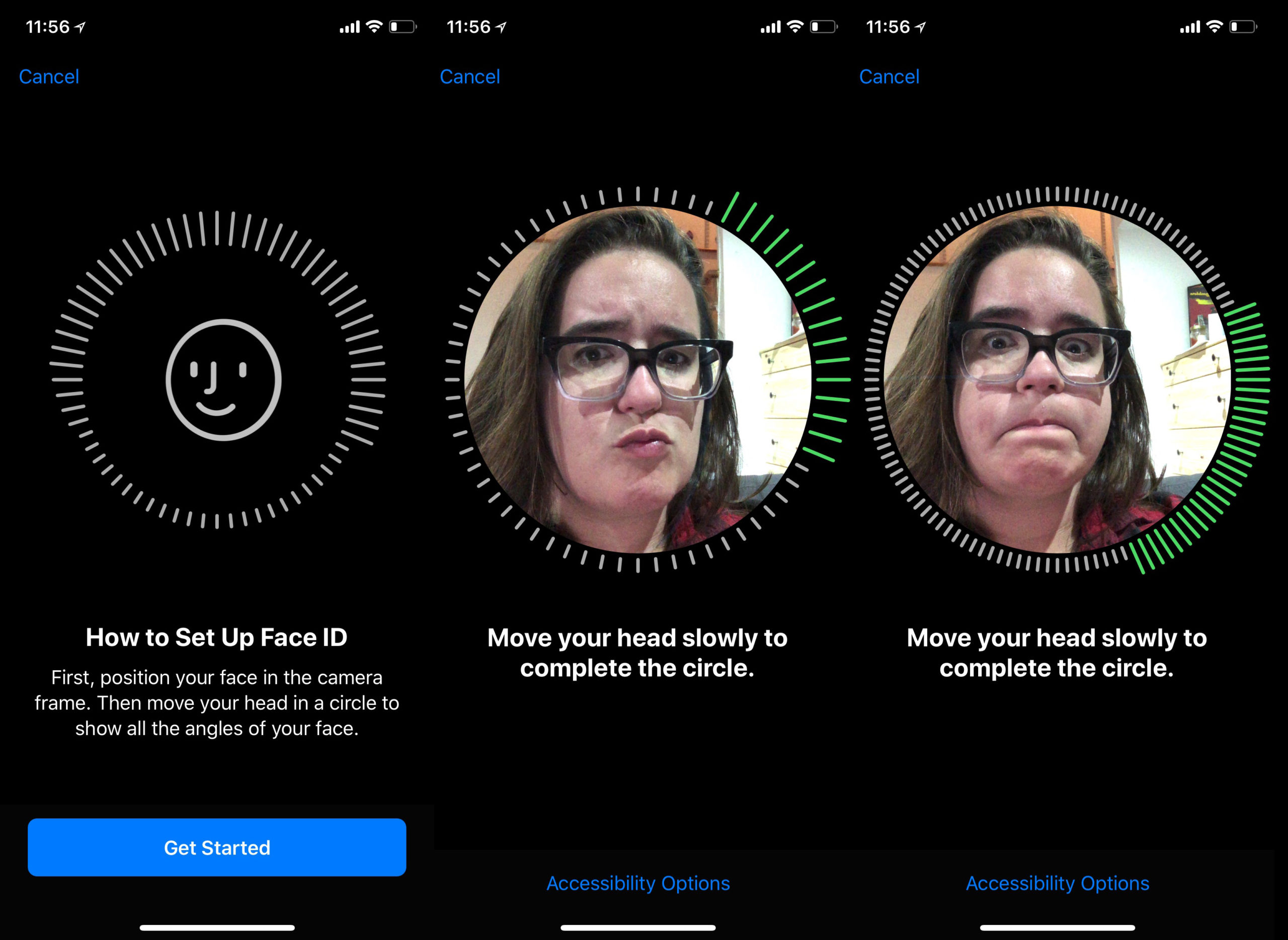The iPhone X’s Face ID camera module has received a bit more press than Apple probably intended. The facial recognition security tech was the whiz-bang feature that caught everybody’s eye during the Tim Cook and friends keynote — and later it was repeatedly fingered as the culprit behind the long-rumoured iPhone X shortages and delays. So what’s the deal with it?
All images: Alex Cranz/Gizmodo
I picked up an iPhone X review unit yesterday afternoon from Apple, and the first thing I did — the first thing I needed to do — was test out the much ballyhooed Face ID (a more complete review will happen once I’ve actually had a few days with the damn thing). The better camera and the gorgeous display are definitely crucial features, but no component of the iPhone X is more critical to its long-term success than Face ID.
This is Apple’s next big stab at biometric security, and if the company flubs it up, if a cheap sensor in the Home button is a better solution than a delicate sensor array in the display, then Apple’s has built nothing more than a really nice Galaxy S8.
And that can’t happen. Apple’s strength isn’t in bleeding edge hardware, it’s in the most friendly user interface and experience available in a phone today. The new Face ID module should allow you to just glance at your phone and swipe to access your home screen. But is that easier than a fingerprint sensor really?
I should note, that Face ID is also supposed to make the phone more secure. Touch ID is definitely neat, but has always been fairly susceptible to spoof attempts. Nasir Memon, chair of the New York University Tandon School of Engineering spoke with Gizmodo earlier this year and explained that Touch ID actually takes multiple tiny photos of a person’s fingerprints. “What it’s doing is capturing small, small squares — little partial fingerprints,” he said.
According to Apple, that means there’s a one in 50,000 chance that stranger can access a phone via Touch ID. With Face ID, Apple claims that number jumps to one in a million. (Though Apple says the number falls significantly if you have an identical twin or other relative with remarkably similar features).

Setting up Face ID is as easy as looking at the camera and slowly turning your head.
But it needs to see your entire face to work, and as we approach winter, you start to see some of the shortcomings inherent in the new technology. Both Touch ID and Face ID require you to remove your gloves, but, as I noted in a test this afternoon, Face ID also demands you lose the scarf over your nose or the hat pulled down past your eyebrows.
In fact, for all of Apple’s bluster, in some situations, Face ID starts to feel less convenient. I can’t blindly unlock my phone while it’s still in my pocket, and because you have to swipe up to unlock the phone, it feels like there’s an extra step sometimes when I unlock the iPhone X.
In regular practice, Face ID actually works almost perfectly much of the time. I don’t even think about it. I tilt the phone towards my face and swipe. No patient holding of a button. The little lock at the top of the display simply switches over, and I’m in. To my amusement, it even unlocks if I make a funny face, and I’ve got to admit, having my phone unlock while I’m doing a monkey face is a delight.
Best yet, it works totally well even in situations when you would expect a facial recognition system to definitely fail. Trying to open my phone in pitch black room or after whipping my glasses off my face? No problem!
Glasses are an important thing to discuss, though. I’ve only had the iPhone X a few hours, and it’s taken that long for the Face ID module to understand the big planes of plastic in front of my face. After the initial setup of Face ID, in which you rotate your face slowly while staring at the camera, the technology takes time to learn your features, becoming smarter the longer you use it.
That means the first time you try to open your phone in a dark room, or while wearing glasses, it might fail. But after you’ve done it a few dozen times, it knows your every contour and crevice, and, according to Apple, it might even work when you have a monster beard or forget to Nair the mustache your hirsute genetics gave you.
But this was only at the beginning of my week with this phone. I’ll report back as I’ve had more time to play with the device, and I learn more.
